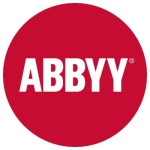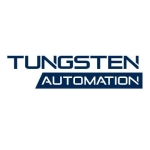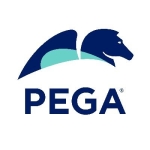What is our primary use case?
We are using UiPath for some automations. One of the roles that I have handled over the last two years was related to customer service. In customer service, you tend to have a lot of inquiries and redundant work that can be done through RPA automation. We managed to use it to reduce a lot of recurring tasks. Our experience is very nice when using automation to reduce the workload.
There are a lot of cases related to user inquiries or figuring out how to do things, as well as some tasks related to setting passwords, creating shared folders, and creating virtual machines. These types of workflows are tasks that require only line manager approval, and things can be done without daily human intervention. We have managed to automate staff onboarding and related tasks.
I have recently changed to a governance role. I am now the governance director at the company. A part of my governance role is taking care of internal and CSR committees. We are considering using automation for good causes.
We are now both a customer and a partner of UiPath. We are using UiPath as a partner because we are selling it to customers and we are also using it internally for the benefit of our employees.
How has it helped my organization?
UiPath has helped us a lot to reduce unnecessary load on the agents. In customer service, you tend to do a lot of repetitive tasks. After some time, the employee or agent ends up not being happy because they have been doing the same thing every day. When you take away such reoccurring and redundant tasks, you keep the employee or the agent free to do what matters more. It increases customer satisfaction and employee satisfaction.
UiPath frees up employee's time for things that matter and need to be done by a human. It has saved 30% to 40% of the time of the customer service staff. We can easily automate tasks that our agent is conducting. The benefits are seen more outside working hours when you have fewer people working.
UiPath helps us be more efficient by freeing staff from doing unnecessary tasks. There is better load balancing and utilization of the agent's or employee's time, so there is going to be more productivity.
UiPath helps speed up digital transformation. Bots can do multiple tasks at the same time. Humans need more interactions for every task.
UiPath helps reduce human error. Bots are more precise than humans. A bot gives the output based on the instructions without making mistakes.
What is most valuable?
As the head of the division, I do not use UiPath myself. However, I am the decision-maker, so I review the features. The combination of both full-attended and half-attended automation, where you can automate tasks and still interact when required, is very useful.
It provides efficiency by freeing staff from unnecessary tasks, resulting in a balanced workload and more productive use of an employee's time. The tool has a noticeable ROI, and the investment is worth every penny as it reduces tedious tasks and improves scalability.
It is very easy to use. During the COVID lockdown, my son who was 11 at the time attended a UiPath and Automation Anywhere training with me. He has already automated his school tasks requiring saving data and uploading some documents to the portal. If a kid can do this, it shows how easy it is.
What needs improvement?
UiPath is an RPA solution, but I have never explored the AI part of it. I am unsure if it has an AI element or not. Merging RPA with AI and ChatGPT would be beneficial. Adding more AI could help in small tasks that require intelligence or machine learning, leading to the next stage of automation.
Buyer's Guide
UiPath Platform
October 2025
Learn what your peers think about UiPath Platform. Get advice and tips from experienced pros sharing their opinions. Updated: October 2025.
872,837 professionals have used our research since 2012.
For how long have I used the solution?
We have been using UiPath for about five to six months.
What do I think about the stability of the solution?
It is stable. I would rate it an eight out of ten for stability.
What do I think about the scalability of the solution?
It is very scalable. I would rate it a nine out of ten for scalability.
It is being used at multiple locations by many customers.
How are customer service and support?
I do not have experience dealing with customer service, but the feedback from my team was positive. My personal experience is limited, but I never had any complaints from my team.
I had a chance to explore the UiPath Community in 2021. The interaction was positive at that time. After that, I have not had the need to use the community. I also used UiPath Academy at that time for a short course. I am an engineer, but I have been in management roles for a long time. I found the learning material to be tough at the time, but it was not a big course. It was a public course. Their big courses would be of better quality.
How would you rate customer service and support?
What was our ROI?
It provides an ROI. We managed to get a return on investment differently with it. It is costly, but when we consider how much time we have saved and how happy our employees are after removing a lot of annoying tasks or non-intelligent tasks, the investment is worth every penny.
Using such tools also gives scalability when the demand is high. You can hire more resources, but it is a costly process. You do not have the budget to keep adding more employees. With automation, you tend to distribute tasks to the same robot. A robot does not require time to eat or rest. It also does not fall sick or ill. It drives productivity differently. It is more efficient. In the end, it is cost-effective.
Especially when it comes to customer service, there is less load on humans. A bot can be there 24/7.
It has saved about 20% to 30% of costs.
Which other solutions did I evaluate?
We evaluated Automation Anywhere, ServiceNow, and others. Our evaluation process took us a while because there are a lot of automation applications. The top ones definitely include Automation Anywhere. We did a lot of evaluation to see which one quantifies or fits all our purposes and needs.
What other advice do I have?
My recommendation is to focus on optimization before automation. Decide what to automate and then proceed. Sometimes automation can create more issues. Ensure that the process is clear and structured. It works very well for repetitive processes or tasks done in large volumes.
In terms of maintenance, we are teaching the bot to normalize. If the UI interface changes, we need to redo the bot, but that does not happen often. The bot can learn a little bit, and the changes are not much. The maintenance is minimal.
I would rate UiPath an eight out of ten.
Which deployment model are you using for this solution?
Public Cloud
If public cloud, private cloud, or hybrid cloud, which cloud provider do you use?
Other
Disclosure: My company has a business relationship with this vendor other than being a customer. Partner





















